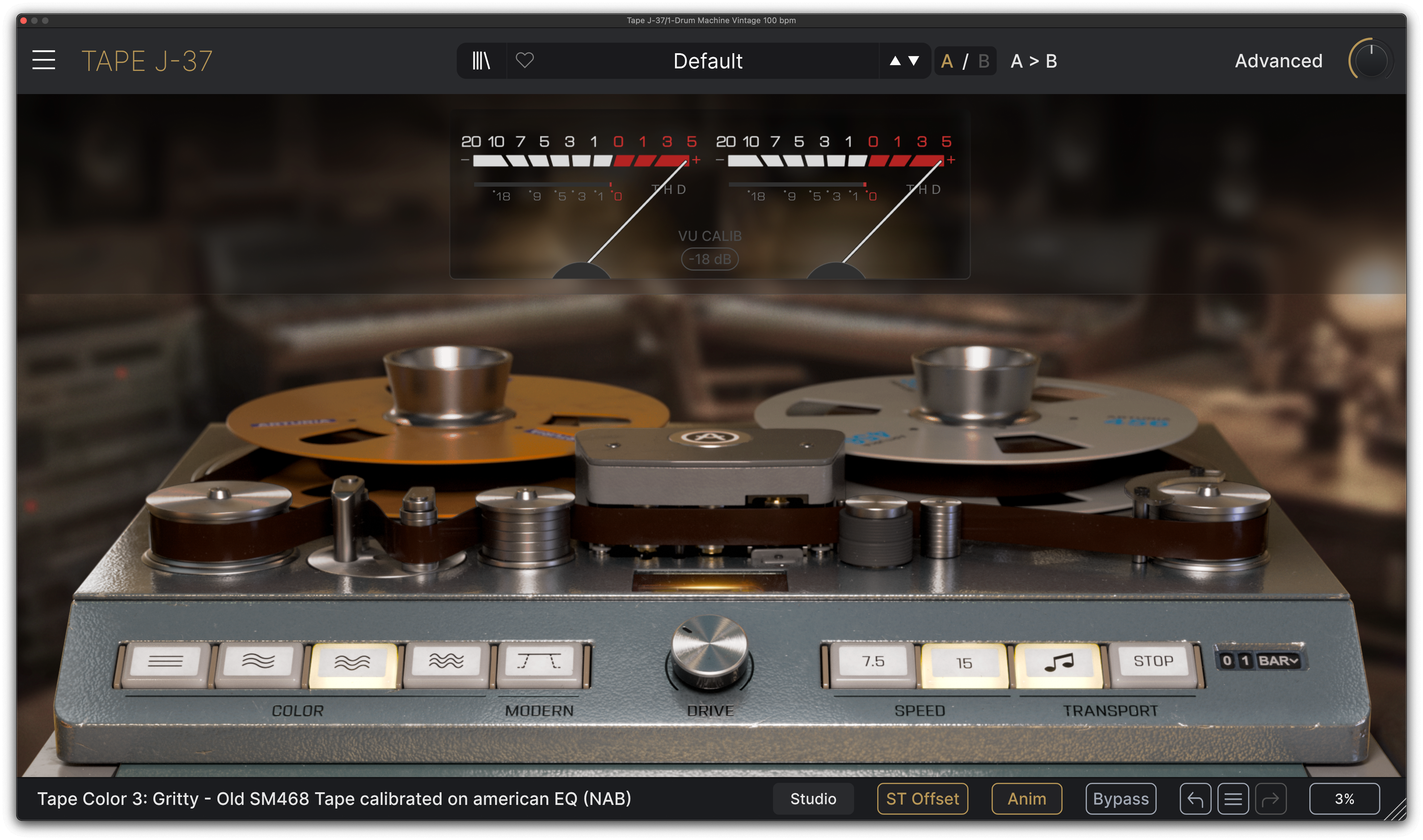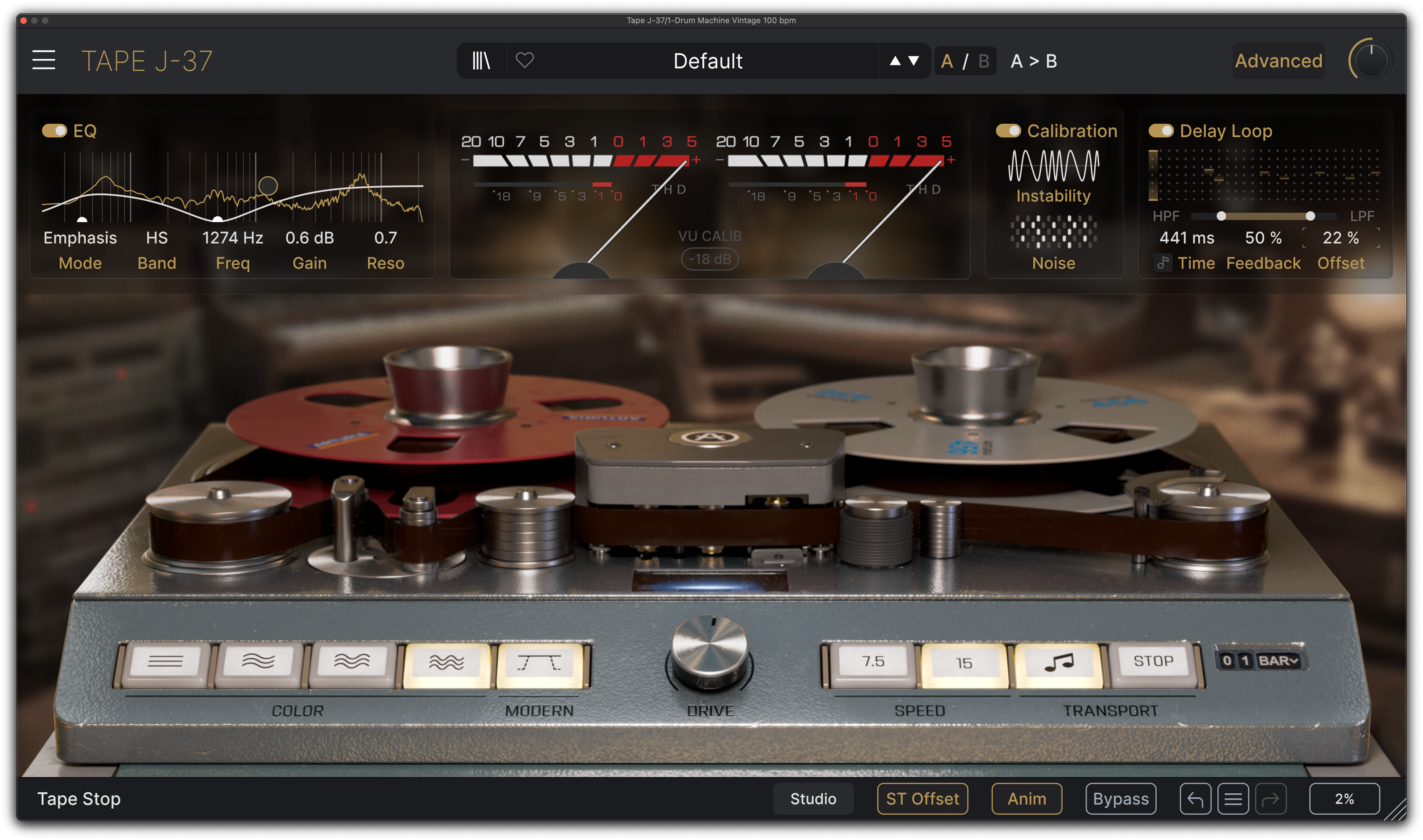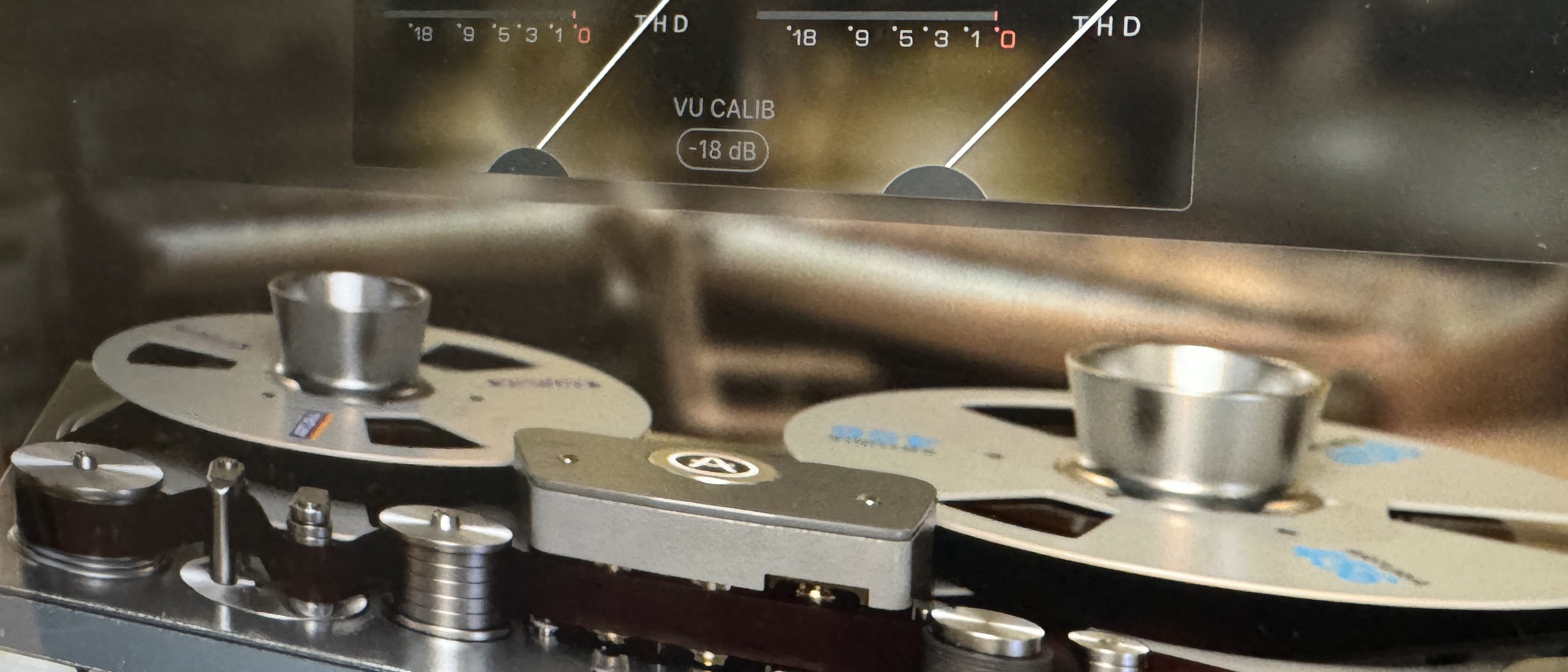MusicRadar Verdict
Tape J-37 gracefully injects authentic grit and harmonic girth into our developing tracks.
Pros
- +
Massively authentic tape emulation sampled via a real J37.
- +
UI and interface faithful to the original controls, with more flexibility just under the hood.
- +
Some meticulously pre-sculpted presets to set you on the right path.
- +
Can be used for specific instruments or across the entire mix bus.
Cons
- -
Tape warmth really is in the ear of the beholder, so perhaps not a necessity for all producers.
MusicRadar's got your back
What is it?
Long before the era of digital dominance, tape was the be-all and end-all of recording technology. It was the principal format on which everything was recorded, stored and edited. But, being a fundamentally physical mechanism, the clunky character and technical quirks of the mechanical machines used would often be audibly present (for better and for worse) on the final recordings.
It’s a quality that many people point to when discussing the ‘superiority’ of analogue over digital. That being the presence and sparkle (or dirt, depending on who you ask) that added a certain tangibility.
As we’re now living in a digital age, the only way to achieve the same results today is via a pricey emulation (or hitting up auction sites for any good deals on an antiquated tape machine!).
French software guru Arturia is a dab hand at modelling vintage tech, particularly when it comes to synths (its blinding synth anthology V Collection is case in point). It has now firmly turned its attention to the tape emulation domain with Tape J-73 – its first dedicated reel-to-reel reproduction.
Tape J-37 is an exacting model of the vacuum tube-driven Studer J37. It was the very first true multi-track recorder and was a fixture of the hallowed halls of Abbey Road, regularly relied upon by the Beatles, Pink Floyd, Jimi Hendrix and many other luminaries of recorded music. A real J37 – once owned by legendary French producer Eddie Barclay – was sampled during the making of the plugin.

Performance
The Tape J-37 brings that classic, tape-reel aesthetic firmly into the centre of its UI, with a moving visualisation of an original J37 putting you into the classic mindset straight away. If you’re already familiar with Universal Audio’s top-tier forays into tape emulation, you’ll be on familiar ground, but if you’re new to working with (virtual) tape, then let’s dig into that UI and just what Tape J-37 can bring to the table.
Firstly, there’s the J73’s particular warm sound – a combination of the aforementioned vacuum-tube stages, and the machine’s hard-wired EQ curve and compression, as well as the crispy saturation that is part and parcel of its physical mechanism.
These particular quirks have been beautifully bottled here, but – being Arturia – some ultra-modern expansions of that core sound can be achieved.
Want all the hottest music and gear news, reviews, deals, features and more, direct to your inbox? Sign up here.
The UI is pretty straightforward, with just four major control areas. Firstly, there’s the ‘Color’ section, comprising four distinct tape/EQ curves as well as a ‘Modern’ mode.
These are finely-tuned variations of factors such as tape specification, dirt level, age, wonkiness and overall ‘warmth’, spanning from ‘Pristine’ to ‘Dirtiest’. Cycling through these gives an immediate feel for the gulfs of tape-quality Tape J-37 can span – from a subtle coat to outright crunch.
The ‘Modern’ mode surgically excises the original machine’s in-built EQ mode, yet allows you to retain its particular colouration – something impossible to do with an original unit.
At the centre of the UI, we find the central Drive knob – this can be cranked up to reveal some truly delicious levels of saturation and stressed-out distortion.
Speed controls on the right of the UI can have a big bearing on the overall effectiveness. Switching up to 15 ips can give a more frequency-wide fidelity, while 7.5 ips results in much more analogue simplicity and warmth. The latter is great for daubing atop vocals, lending them an authentically vintage quality. The former notably enhances synth pads and can squeeze further harmonic juice from digital lead sounds.

Further tape-wrangling can be achieved by switching between the two Transport buttons to the left of the Speed controls. These can affect the rate at which the audio slows when pausing and playing the tape machine. The number of bars the resulting slowdown/speed-up spans is selectable from a drop-down. Manipulating this area can be a really cool way to achieve some classic-vibe vocal manipulation, building up transitions between song sections, or even slowing down an entire mix bus.
There’s much more to get stuck into here too, including some more 21st-century-angled advanced controls which include a dedicated EQ section, a delay visualiser and the ability to implement a high- and low-pass filter, should the authentic button-based switch-controls not give you enough to work with.
So, while Tape J-37 gives you (more than) complete mastery over this tape legend, for our own tape-quality imparting purposes, simply cycling through the array of pre-designed presets – neatly tagged and categorised into distinct sections (Delay, Distortion, Tape, EQ etc) present numerous routes to gracefully inject just enough authentic grit and harmonic girth to our developing tracks.

Verdict
Tape J-37 has a fantastic sound, especially when compared to its pricier competitors. Everything about the interface and general user experience is designed to push your sensibilities back into a simpler age, while just beneath the surface lie some much more complex sonic-sculpting tools. It can also harmonically open up (or degrade) your audio sounds in creativity-triggering ways.
Hands-on demos
Arturia
Alternatives
A little on the pricier side, but if you want to really get serious with tape, then Universal Audio’s Studer A800 is the most exacting emulation of the format we’ve heard, with all the controls required to perfectly bring out divine analogue texture.
Read the full Universal Audio Studer A800 review
Currently on offer, Waves’ own version of the J37 might be over ten years old, but offers more expanded hands-on tools, including control of wow, hiss and flutter levels
Read the full Waves Abbey Road J37 Tape review
Specifications
Price | $105/£85/€99 |
Requirements | Mac and PC 4GB RAM 4 Core CPU 1GB Hard Drive space VST, AAX, Audio Unit, NKS (64-bit DAWs only) |
Contact |

I'm Andy, the Music-Making Ed here at MusicRadar. My work explores both the inner-workings of how music is made, and frequently digs into the history and development of popular music.
Previously the editor of Computer Music, my career has included editing MusicTech magazine and website and writing about music-making and listening for titles such as NME, Classic Pop, Audio Media International, Guitar.com and Uncut.
When I'm not writing about music, I'm making it. I release tracks under the name ALP.
You must confirm your public display name before commenting
Please logout and then login again, you will then be prompted to enter your display name.



